Evaluation of a tool to score donor vein suitability for blood donation
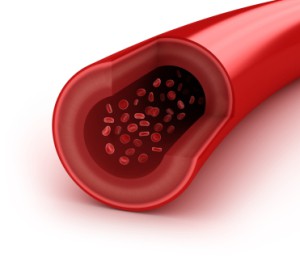
A specific blood donation vein scoring tool was assessed to measure donor vein suitability for whole blood collection and investigate the correlation of the donor’s veins with donation outcomes” Hirani et al (2019). Abstract: BACKGROUND AND OBJECTIVES: Phlebotomy is a central task for whole blood donation, yet there are no published standards regarding systematic donor […]
Utilization of a central venous catheter insertion care bundle

By implementing the CVC care bundle in clinical practice in accordance with national policies, medical utilization decreased, thereby considerably improving medical resource usage” Chung et al (2019). Abstract: OBJECTIVES: The objectives of this study are to explore medical care utilization associated with promoting the central venous catheter (CVC) care bundle plan using Taiwan’s National Health […]
Current practice in dialysis central venous catheter management
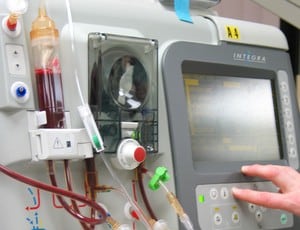
To explore the current practices related to the insertion, management and removal of dialysis central venous catheters used in patients with chronic kidney disease requiring haemodialysis” Craswell et al (2019). Abstract: AIM: To explore the current practices related to the insertion, management and removal of dialysis central venous catheters used in patients with chronic kidney […]
Point-of-care analyses of blood samples from intraosseous access
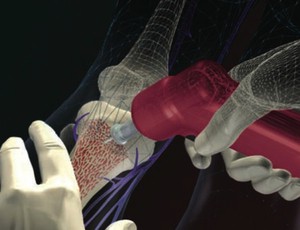
When vascular access is challenging, IO access can be used for emergency POC analyses to help guide clinical decision-making. However, the limitations of IO POC analyses must be carefully considered” Jousi et al (2019). Abstract: BACKGROUND: Intraosseous (IO) access is used for fluid and medication administration in emergency situations when difficulties with vascular access are […]
Cost-effectiveness of infusion pumps to reduce errors in a Pediatric ICU

To analyze cost-effectiveness and to calculate incremental cost-effectiveness ratio of the use of infusion pumps with drug library to reduce errors in intravenous drug administration in pediatric and neonatal patients in Intensive Care Units” Silva et al (2019). Abstract: OBJECTIVE: To analyze cost-effectiveness and to calculate incremental cost-effectiveness ratio of the use of infusion pumps […]
Optical skill-assist device for ultrasound-guided vascular access

Ultrasound-guided central venous catheterization may cause lethal mechanical complications intraoperatively. We developed a novel device to prevent such complications. It works as a needle guide to supplement the operator’s skill” Asao et al (2019). Abstract: Ultrasound-guided central venous catheterization may cause lethal mechanical complications intraoperatively. We developed a novel device to prevent such complications. It […]
Retrospective data of long-term home parenteral nutrition

The aim of this study was to evaluate the safety and efficacy of home parenteral nutrition (HPN) service in patients with benign chronic intestinal failure (CIF)” De Francesco et al (2019). Abstract: OBJECTIVES: The aim of this study was to evaluate the safety and efficacy of home parenteral nutrition (HPN) service in patients with benign […]
Stepwise technique for central venous catheter placement under ultrasound guidance

Due to its relative simplicity, easy reproducibility, and fair accuracy to diagnose distal thrombus; incorporation of this technique into a routine check of CVC, should be feasible” Patil et al (2019). Extract: Response to augmentation maneuvers has been used to diagnose upper extremity thrombosis.[4],[5] Due to its relative simplicity, easy reproducibility, and fair accuracy to […]
Agitated saline during ultrasound subclavian central line placement

Agitated saline during central line placement is described for the purpose of identifying the subclavian vein during ultrasound-guided procedures” Araj et al (2019). Abstract: Agitated saline during central line placement is described for the purpose of identifying the subclavian vein during ultrasound-guided procedures. You may also be interested in… [rp4wp] Reference: Araj, F.G., Pena, J. […]
Maximal sterile barrier precautions independently contribute to decreased CLABSI

Our objective was to investigate the association of MSB implementation with central line-associated bloodstream infection (CLABSI) in very low birth weight infants” Kinoshita et al (2019). Abstract: BACKGROUND: The use of peripherally inserted central catheters (PICCs) in neonates differs among various institutions and countries because there are no random controlled trials or large observational studies […]
Severe anaphylactic reactions triggered by chlorhexidine-coated catheters

Intraoperative insertion of chlorhexidine-coated central venous catheters can trigger life-threatening anaphylaxis in susceptible patients undergoing renal transplantation” Ho et al (2019). Abstract: PURPOSE: Although intraoperative anaphylaxis during surgery is a rare event, we describe five patients who experienced perioperative anaphylactic reactions during renal transplantation and were referred for investigation. CLINICAL FEATURES: Skin-prick and intradermal skin […]
Inadvertent carotid artery cannulation with malposition of catheter tip in right ventricle
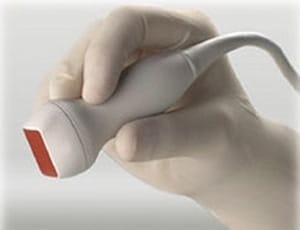
We report a rare case of inadvertent cannulation of internal carotid artery in patients of tetralogy of Fallot undergoing intracardiac repair during an attempt to cannulate internal jugular vein” Negi et al (2019). Abstract: Central venous catheterization is an essential procedure in patient undergoing cardiac surgery, as it provides central venous pressure monitoring, fluid administration, […]
Ultrasound-guided central venous catheter placement through the axillary vein
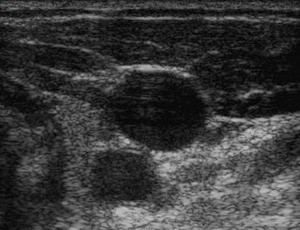
Placement of a central line catheter in the axillary vein using a novel ultrasound- guided bracket-assisted technique may be a feasible, safe and rapid alternative to the conventional jugular and subclavian approaches” Farina et al (2019). Abstract: BACKGROUND: Central venous catheterization is essential for careful administration of fluids and drugs in cardiac critical care patients. […]
Complications associated with internal jugular hemodialysis catheter

The current study examines the complication rate in people due to permanent intrajugular hemodialysis catheterization” Hyder et al (2019). Abstract: Introduction: A significant increase in patients with end-stage renal disease has been observed currently in our community. Kidney transplantation is the most promising cure but the problem is that large numbers of people are not […]
What is the best central venous catheter lock solution?

However, using traditional pairwise meta-analyses to summarise the evidence does not allow the inclusion of data from treatments that have not been compared head to head, which could impact the precision of pooled estimates in a meta-analysis. Therefore, we evaluated the efficacy and safety of the different lock solutions for CRBSI through a network meta-analysis” […]
Vascular access practices for therapeutic apheresis

Obtaining vascular access (VA) is a critical part of the therapeutic apheresis (TA) treatment plan. Currently, there are no guidelines for VA decision-making and maintenance related to TA procedures” Tanhehco et al 92019). Abstract: INTRODUCTION: Obtaining vascular access (VA) is a critical part of the therapeutic apheresis (TA) treatment plan. Currently, there are no guidelines […]
Umbilical catheters as vectors for generalized bacterial infection

The aim of this study was to evaluate bacterial colonization of the umbilical catheter, with a focus on the difference between various sections of the catheter, the duration of catheterization, patient status and gestational age” Sobczak et al (2019). Abstract: INTRODUCTION: Umbilical catheterization offers unique vascular access that is only possible in the neonatal setting […]
Polymer-based anti-quorum catheter coating challenges Staphylococcus aureus

The developed anti-quorum-coated catheter that is non-toxic and biocompatible has the potential to be used in other medical devices, thereby preventing catheter-associated infections” Vasudevan et al (2019). Abstract: Background: MDR Staphylococcus aureus is a major aetiological agent of catheter-associated infections. A quorum sensing targeted drug development approach proves to be an effective alternative strategy to […]
Barcode medication administration implementation in the operating room

Barcode medication administration (BCMA) is endorsed by the American Society of Health-System Pharmacists (ASHP) for use in hospitals to improve safety during medication administration” Dunn and Anderson (2019). Extract: Barcode medication administration (BCMA) is endorsed by the American Society of Health-System Pharmacists (ASHP) for use in hospitals to improve safety during medication administration.1–3 In inpatient […]
Trisodium citrate 4% versus heparin as a catheter lock for non-tunneled hemodialysis catheters

Non-tunneled hemodialysis catheters are currently used for critically ill patients with acute kidney injury requiring extracorporeal renal replacement therapy. Strategies to prevent catheter dysfunction and infection with catheter locks remain controversial” Quenot et al (2019). Abstract: BACKGROUND: Non-tunneled hemodialysis catheters are currently used for critically ill patients with acute kidney injury requiring extracorporeal renal replacement […]
Impact of hospital-based interventions targeting false-positive blood cultures

Blood culture contamination (BCC) increases length of stay (LOS) and leads to unnecessary antimicrobial therapy and/or hospital-acquired conditions (HACs)” Geislera et al (2019). Summary: Background: Blood culture contamination (BCC) increases length of stay (LOS) and leads to unnecessary antimicrobial therapy and/or hospital-acquired conditions (HACs). Aim: To quantify the magnitude of additional LOS, costs to hospitals […]
Should central venous catheters be rapidly removed to treat Staphylococcus aureus CRBSI

The aim of this study was to compare the incidence of failures in neonates and children with Staphylococcus aureus CR-BSI with or without rapid catheter removal” Boussameta et al (2019). Summary: Catheter-related bloodstream infection (CR-BSI) treatment is based on empiric antibiotherapy associated with or without catheter removal. The aim of this study was to compare […]
Peripheral PN containing amino acids associated with Bacillus cereus BSI

This study indicated that 8 h is the maximum appropriate drip infusion time for peripheral parental nutrition containing amino acids to prevent B cereus bloodstream infections” Shiota et al (2019). Extract: In some Japanese hospitals, patients using infusion bags for parenteral nutrition containing amino acids have developed Bacillus cereus bloodstream infections. We considered that proliferation […]
Clinical feasibility and effectiveness of bedside PICC placement

The aim of this study was to evaluate the clinical feasibility and effectiveness of bedside peripherally inserted central catheter (PICC) using portable digital radiography (DR) in intensive care unit (ICU) patients” Cho et al (2019). Abstract: The aim of this study was to evaluate the clinical feasibility and effectiveness of bedside peripherally inserted central catheter […]
Vancomycin monitoring based on area under the concentration–time curve

The purpose of this study was to (1) determine whether academic medical centers implemented area under the concentration–time curve (AUC)–based monitoring for vancomycin and (2) characterize perceived barriers to implementation and challenges experienced during the implementation process” Kufel et al (2019). Abstract: Purpose: The purpose of this study was to (1) determine whether academic medical […]
Innovation in central venous access device security

It is feasible to conduct an efficacy randomized control trial of the studied interventions. Further research is required to definitively identify clinical, cost-effective methods to prevent central venous access device failure by examining new dressing and securement technologies and techniques” Ullman et al (2019). Abstract: OBJECTIVES: Central venous access devices enable many treatments during critical […]
Multifaceted hand hygiene improvement program

Our multifaceted improvement program, for nurses and physicians of the ICUs in the largest hospital of Indonesia, resulted in a significant improvement of the HH knowledge and HH compliance, but HH compliance levels waned over time after the intervention, indicating a need for continued monitoring and repeated interventions” Saharman et al (2019). Abstract: Background: Hand […]
Prone positioning for peripherally inserted central catheter insertion

Peripherally inserted central catheters are usually inserted in supine patients. What should we do when facing a patient who cannot tolerate this position” Longo et al (2019). Abstract: Peripherally inserted central catheters are usually inserted in supine patients. What should we do when facing a patient who cannot tolerate this position? In this article, we […]
Subcutaneous suppressive antibiotic therapy for bone and joint infections

Since 2010, we have used infection salvage therapy using off-label subcutaneous (sc) injection of a β-lactam as PSAT for patients in whom oral PSAT is not possible” Pouderoux et al (2019). Abstract: BACKGROUND: Optimal treatment of prosthetic joint infection and chronic osteomyelitis consists of surgical removal of biofilm-embedded bacteria, followed by a 6-12 week course of […]
Does infusion time affect the retention of parenteral trace elements?

Overall, trace element retention appears to be minimally affected by infusion time” Ferrie (2019). Abstract: When readymade parenteral nutrition in multi-chamber bags is supplied without vitamins and minerals, these have to be added or given separately. Separate rapid infusion has logistical advantages but has been claimed to saturate tissue mechanisms, potentially increasing urine micronutrient losses. […]

